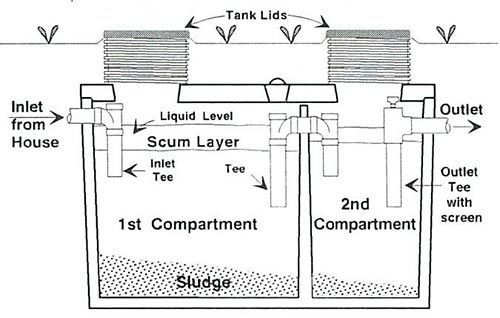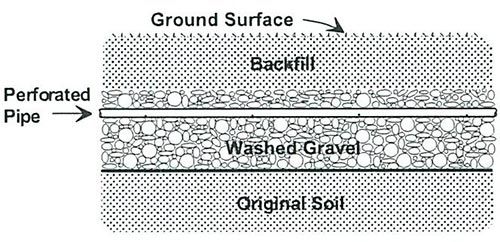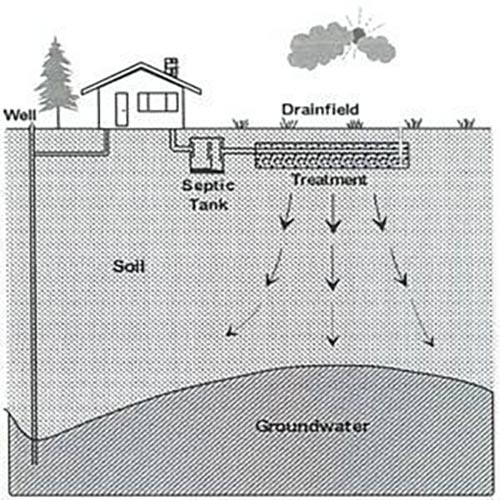The typical septic tank is a large buried rectangular or cylindrical container made of concrete, fiberglass or polyethylene. Wastewater from your toilet, bath, kitchen, laundry, etc. flows into the tank. Heavy solids settle to the bottom where bacterial action partially decomposes them to digested sludge and gases. Most of the lighter solids, such as fats and grease, rise to the top and form a scum layer.
Septic tanks may have one or two compartments. Two compartment tanks do a better job of settling solids and are required for new systems. Tees or baffles are provided at the tank's inlet and outlet pipes. The inlet tee slows the incoming wastes and reduces the disturbance of the settled sludge. The outlet tee keeps the solids or scum in the tank. All tanks should have accessible covers for checking the condition of the baffles and for pumping both compartments. If risers extend from the tank to or above the ground surface, they should be secure to prevent accidental entry into the tank.
Solids that are not decomposed remain in the septic tank. If not removed by periodic pumping, solids will accumulate until they eventually overflow into the drainfield. Most septic tanks need to be pumped every 3 to 5 years, depending on the tank size, and the amount and type of solids entering the tank.





